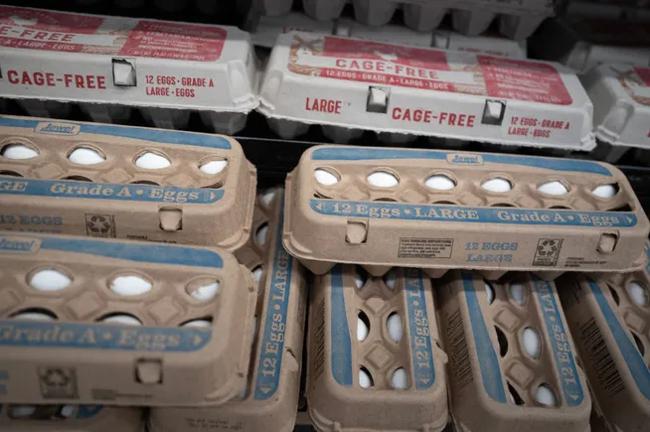Summary
Food-at-home prices in April saw the smallest month-over-month increase since 2020, the Bureau of Labor Statistics reported.
Source: Food Dive

AI News Q&A (Free Content)
Q1: What recent trends have been observed in grocery inflation, and how significant was the slowdown reported in April 2024?
A1: In April 2024, food-at-home prices experienced their smallest month-over-month increase since 2020, indicating a notable easing of grocery inflation. This slowdown reflects improved supply chain stability and a moderation in demand, which contributed to lower price pressures in supermarkets. This trend suggests that the inflationary spike seen in previous years, driven by pandemic-related disruptions and global supply chain issues, is beginning to wane.
Q2: How have recent innovations in grocery delivery services impacted consumer convenience and operational efficiency?
A2: Recent innovations such as automated order tracking, AI-powered inventory management, and real-time delivery scheduling have significantly enhanced grocery delivery services. Companies are integrating vision-based object detection systems and predictive algorithms to automate grocery ordering and optimize delivery routes. These advancements improve convenience for consumers and allow retailers to operate more efficiently by reducing delivery times and minimizing operational costs.
Q3: What role do smart home technologies play in grocery management, according to the latest research?
A3: According to recent research, smart home technologies are being leveraged to automate grocery tracking and supply management. AI-based vision systems can monitor household inventory levels, predict user needs, and trigger automatic grocery orders. This integration between smart home devices and retail supply chains aims to fully automate the grocery replenishment process, reducing the risk of stockouts and enhancing user convenience. (Source: Vision-Based Automatic Groceries Tracking System -- Smart Homes, 2023)
Q4: How are supermarkets utilizing data from barcode scanners to measure inflation more accurately?
A4: Supermarkets are increasingly using scanner data, which records every item sold at the barcode level, to improve the accuracy of price indices for measuring inflation. By aggregating detailed sales and pricing data, researchers can create more precise Consumer Price Index (CPI) calculations and monitor inflation trends in real time. The use of scanner data enables better classification, filtering, and aggregation of products, providing granular insights into price changes at the supermarket level. (Source: Scanner data in inflation measurement: from raw data to price indices, 2020)
Q5: What computational challenges are associated with grocery home delivery services, and what solutions have recent studies proposed?
A5: Grocery home delivery services face computational challenges in scheduling and optimizing delivery windows for customers. Recent studies have proposed heuristic and algorithmic approaches, such as local search operations and mixed-integer linear programming, to efficiently allocate delivery slots and build dynamic schedules. These approaches help balance operational logistics while meeting customer preferences for delivery times. (Source: Computational Approaches for Grocery Home Delivery Services, 2021)
Q6: How does the economic impact of grocery delivery innovations compare to traditional supermarket shopping?
A6: Grocery delivery innovations have led to economic shifts, including reduced overhead for physical stores and increased operational costs for delivery logistics. The rise of dark stores and micro-fulfillment centers enables faster deliveries but requires significant investment in technology and infrastructure. While consumers benefit from increased convenience, retailers must balance these investments against the potential for higher delivery-related expenses and changing consumer shopping patterns.
Q7: What are some notable examples of rapid grocery delivery companies and their impact on the retail landscape?
A7: Companies such as Zepto in India have transformed the grocery delivery market through rapid fulfillment models, utilizing networks of dark stores to ensure fast delivery times. Zepto, valued at over $5 billion as of August 2024, competes with major players like Amazon, Flipkart, and Swiggy Instamart. Such companies are reshaping urban retail by prioritizing speed and convenience, leading to increased competition and innovation in last-mile delivery solutions.
References:
- Bureau of Labor Statistics - Consumer Price Index News Release, https://www.bls.gov/news.release/cpi.nr0.htm
- Zepto (company), https://en.wikipedia.org/wiki/Zepto_(company)
- Online grocer, https://en.wikipedia.org/wiki/Online_grocer





